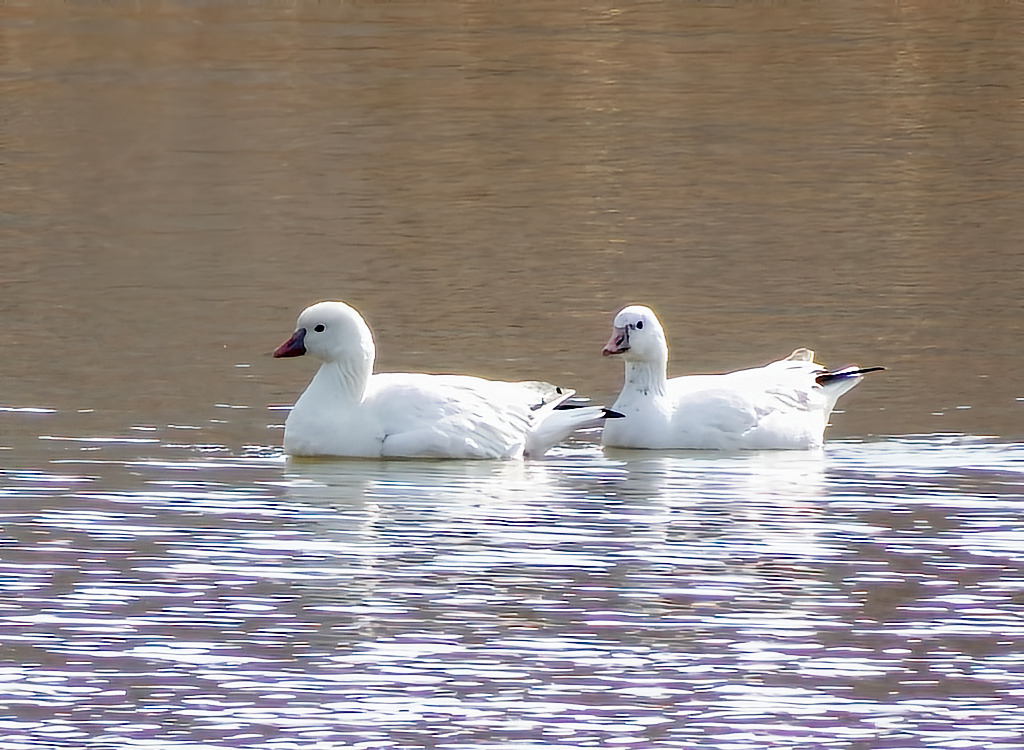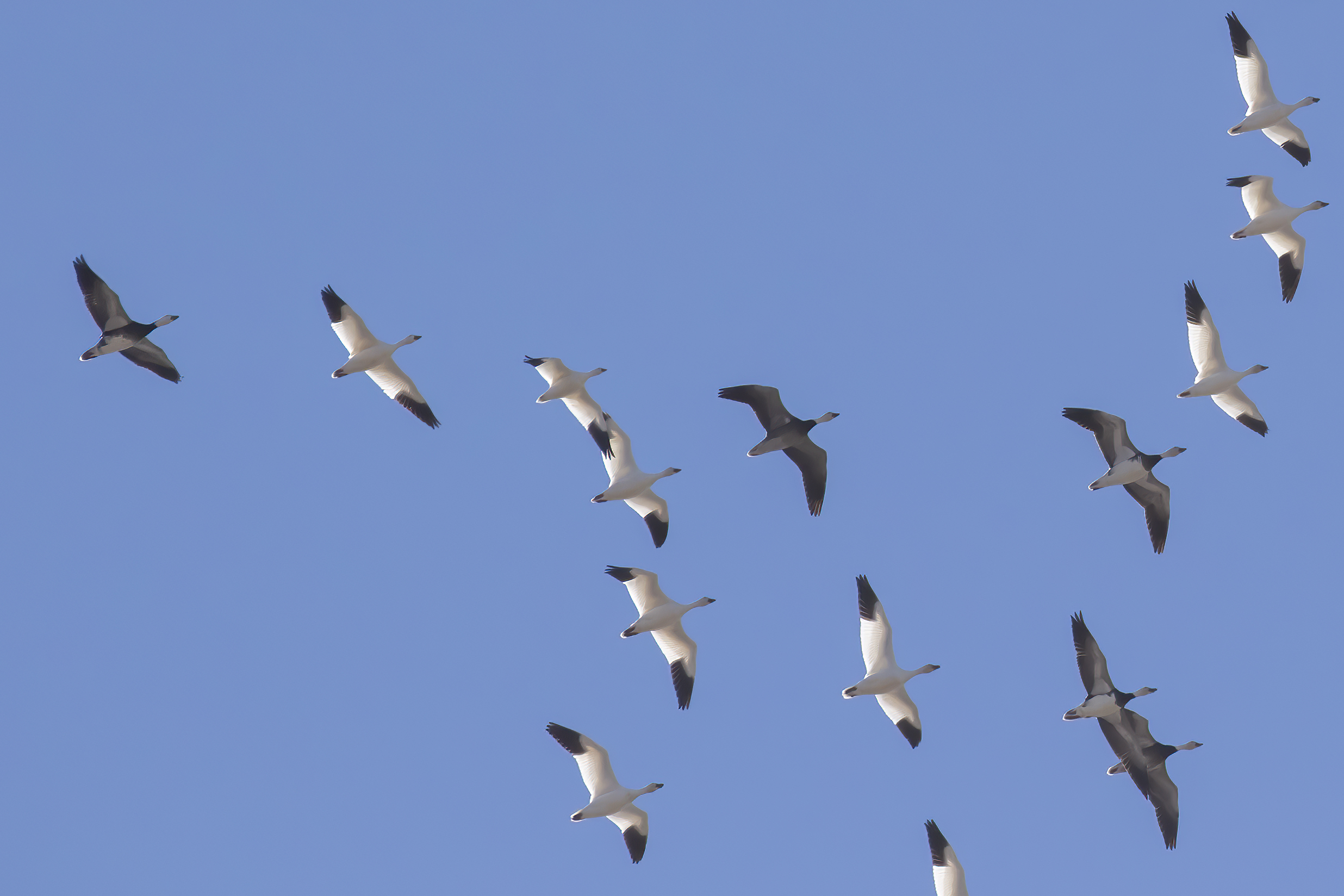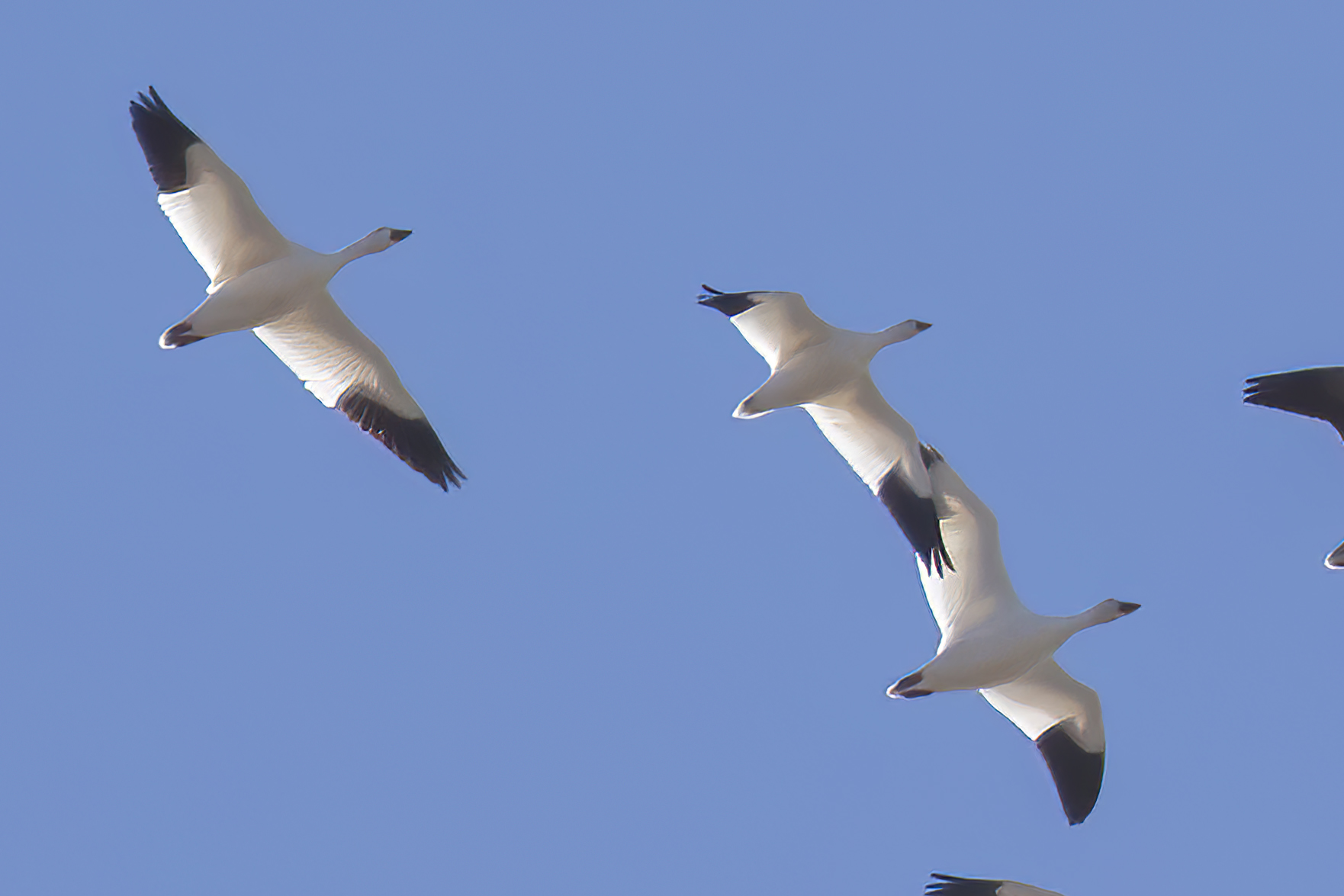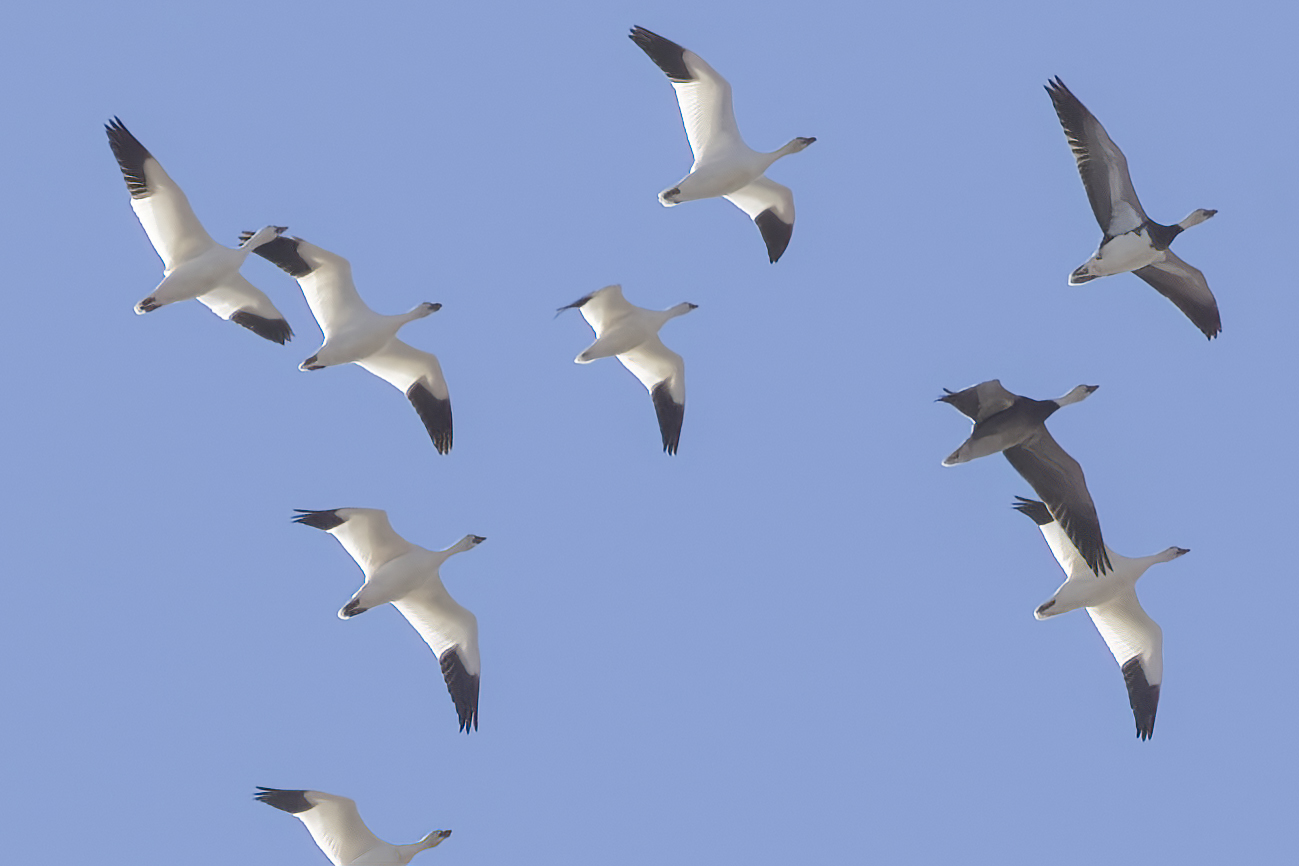
23 inches long with a wingspan of 50 inches. The Ross’s Goose is a small goose that looks very similar to a Snow Goose. The length of the Ross’s Goose is about 80% of the length of a Snow Goose. The sexes of the Ross’s Goose are similar. The legs and feet are pink in adult birds. The pink bill is stubby and small. Unlike the Snow Goose there is no black “smile” patch along the side of the bill. The head of the Ross’s Goose is rounder than that of the Snow Goose. There are two different plumage phases, the white phase and the dark phase. The dark phase is very rare. The adult white phase has entirely white plumage with black on the wing tips. The adult blue phase has a white head and upper neck. The lower neck and body are dark although some birds may have white bellies. The upper wing is dark.
The Ross’s Goose is an annual but somewhat uncommon migrant in the Omaha area often seen with flocks of Snow Geese when flying over the Forest. Rarely they may be seen on the Great Marsh.The best times are March and April and again in October and November.
The Ross’s Goose associates with Snow Geese. The main wintering area for this species is in the Central Valley of California. In the 1950s there were only about 3,000 of these birds, but hunting restrictions drastically helped to where in 1988 there were 188,000. Recently the number of birds wintering in lower central part of the U.S. has increased such that a sighting of this bird in the Midwest has become more common. The Ross’s Goose is generally less vocal than the Snow Goose. The call is higher than a Snow Goose. It is a squeaky “keek, keek” or a low grunting “kowk”.
Disclaimer: The content of NatureSearch is provided by dedicated volunteer Naturalists of Fontenelle Forest who strive to provide the most accurate information available. Contributors of the images retain their copyrights. The point of contact for this page is: Phil Swanson.




